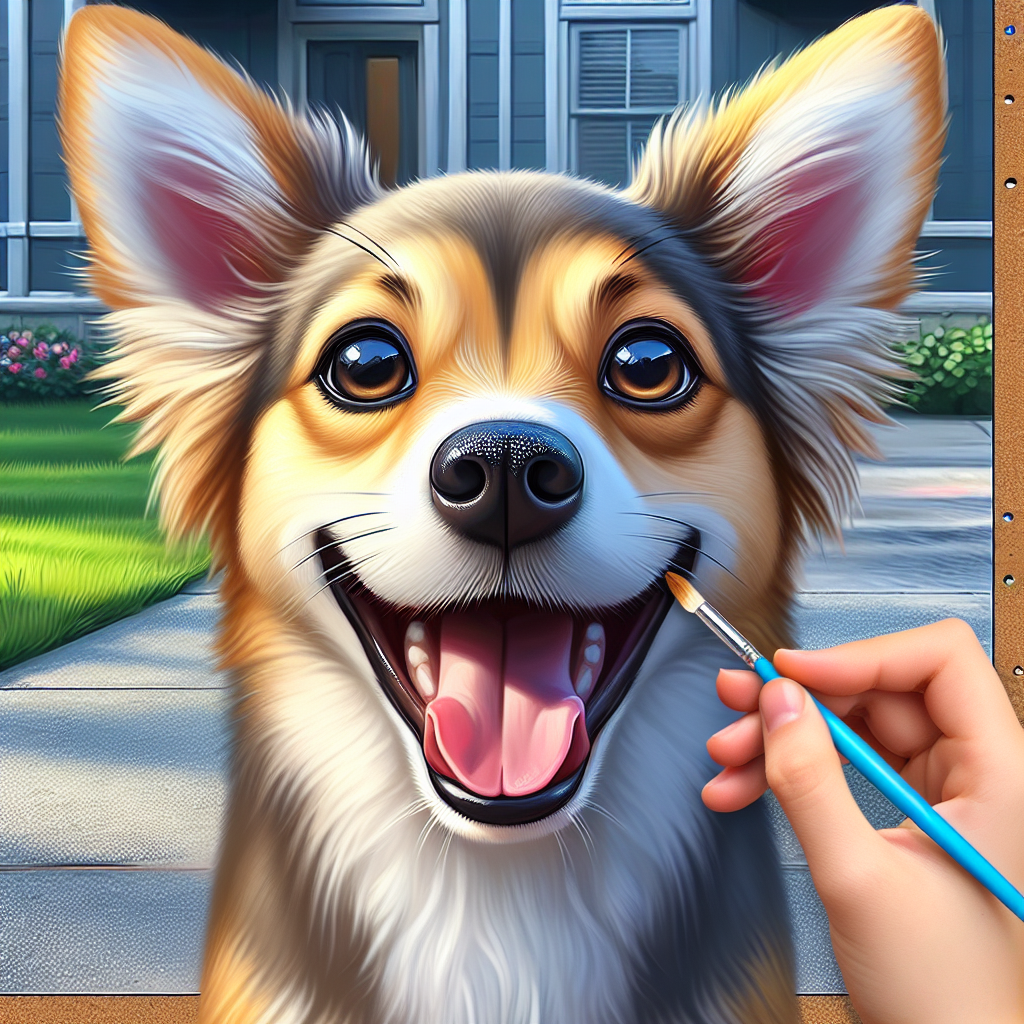Introduction

So, you’re dealing with a flea problem. Welcome to the club—it’s not as exclusive as you’d like. Fleas are those tiny little jumpers that turn your cozy home into their playground. They’re not just annoying; they’re persistent, like that one friend who never leaves the party. Getting them out of your home isn’t just about a quick sweep or a spritz of spray. It takes a plan, a little elbow grease, and a fair amount of patience. But hey, you’re not alone in this battle. I’ve been there. With over 20 years in the pet industry, I’ve seen it all and then some. So buckle up and let’s dive into the best way to get fleas out of your house.
Understanding the Flea Problem
Here’s the thing about fleas—they’re not just a pet problem. No, they’re a home problem. You might think they’re just tiny insects, but these little guys are survivors. They can live for months without a host and lay eggs like it’s going out of style. You might be wondering how to start flea control when they seem to pop up everywhere. It’s like playing whack-a-mole in a funhouse where the moles multiply every time you hit one. Understanding what you’re up against is the first step in dealing with flea infestations.
Fleas are sneaky. They hitch rides on your pets, your shoes, even that new rug you brought home from the thrift store. And once they’re in, they’re in. They thrive in warm, humid environments—basically, your home’s ideal conditions. So, when you’re looking at getting fleas out of your house, you’re really looking at a lifestyle change. A mindset shift, if you will. And it all starts with understanding your enemy.
Identifying Fleas in Your Home
Now, how do you know if you’ve got a flea problem? Good question. It’s not like they leave a calling card. But there are signs of fleas in home that you can look for. First off, keep an eye on your pets. If they’re scratching more than usual or you notice small red bumps on their skin, that’s a red flag. You might even spot fleas hopping around if you part their fur and take a close look.
But it’s not just about your pets. Fleas don’t discriminate. They’ll bite you, too. If you’ve got itchy red spots on your ankles or legs, that’s another sign. Flea identification tips: Look for tiny black specks on your carpets or pet bedding—flea dirt. It’s their droppings, and it’s a dead giveaway. So, grab a flashlight and do a little detective work. Once you’ve confirmed their presence, it’s time to take action.
Immediate Actions to Take
Alright, you’ve identified the problem. Now what? Quick actions for flea removal are your best friend here. First things first, vacuum like you’ve never vacuumed before. Carpets, rugs, upholstery, even your pet’s favorite chair. You’re not just cleaning; you’re waging war. And don’t forget to empty the vacuum bag outside the house. The last thing you need is those sneaky little suckers crawling back out.
Next up, wash everything. Pet bedding, your bedding, any throw blankets or pillows. Hot water is key. It’s like a flea sauna—except they don’t enjoy it. This is your beginner guide to flea elimination, starting with the basics. If things are really bad, you might need to call in reinforcements, like a pest control service. But start with these immediate steps and see how things go.
Common Areas Fleas Hide
Let’s talk flea hiding spots in house. These guys are like ninjas. They love to camp out in places you wouldn’t even think to look. Common areas include carpets, under furniture, and in pet bedding. But don’t stop there. Check around baseboards, in floor cracks, and even in your pet’s favorite napping spots. They’re not picky.
Here’s a pro tip: Put on some white socks and walk around your carpet. It sounds weird, I know. But fleas are attracted to light colors, and they’ll jump right onto your socks, making them easier to spot. It’s like a flea magnet. And once you know where they’re hiding, you can target those areas with treatments.
Remember, getting rid of fleas isn’t a sprint; it’s a marathon. But with persistence, you can win the battle. Thanks for sticking with me through this guide, and good luck on your flea-fighting journey. You’ve got this!
The Battle Plan: Vacuuming and Cleaning
So, you’ve decided to declare war on fleas. Bravo. Now, let’s talk strategy. The first weapon in your arsenal? The vacuum cleaner. If you thought vacuuming was just for getting rid of dust bunnies, think again. This is your Excalibur in the battle against fleas. Vacuuming is critical to remove fleas from your home. You’ve got to get into those nooks and crannies—under the couch, behind the curtains, and yes, even that weird spot under the stairs where you found the missing sock from last Christmas.
Now, I know what you’re thinking. Vacuuming daily sounds like a chore. Well, it is. But unless you want your home to resemble a flea circus, you’ve got to stick with it. Fleas lay eggs like it’s going out of style, so every time you vacuum, you’re sucking up those little future fleas before they become a problem. And don’t forget to empty the vacuum bag or canister outside. Otherwise, you’re just giving them a free ride around your house.
The Natural Army: Herbal and Essential Oil Remedies
Now, if the vacuum is your sword, essential oils are your shield. These little bottles of magic can help keep fleas out of your house. I’m not saying you should turn your home into an apothecary, but a few drops here and there can make a difference. Essential oils like lavender, eucalyptus, and peppermint are popular choices for tackling fleas. But remember, this isn’t a perfume contest. Too much, and your house will smell like a pine forest after a rainstorm.
Natural flea remedies are all about balance. You want enough to deter fleas, but not so much that your cat gives you the stink eye every time you walk past. Consider mixing a few drops of essential oils with water in a spray bottle. A light misting on carpets and furniture can work wonders. Just be sure to check that your pets aren’t sensitive to these oils—some animals have a nose for trouble.
Chemical Warfare: When to Use Flea Sprays and Foggers
Sometimes, nature’s arsenal just doesn’t cut it. When fleas have dug in deeper than a tick on a hound, it might be time to bring out the chemical flea sprays and foggers. Now, I’m not a fan of turning your home into a science experiment, but there are moments when these tools are necessary. The best flea sprays for home use are the ones that don’t make you feel like you need to evacuate the premises for a week.
Using these chemical solutions requires a bit of finesse. You want to be cautious—nobody wants their living room to feel like a no-go zone. Follow the instructions to the letter. It’s not rocket science, but it’s close. Don’t go overboard, and always make sure your pets and kids are out of the spray zone. You don’t want to swap your flea problem for a house full of wheezing.
Pets on the Frontline: Treating Your Furry Friends
Your pets are in the trenches with you. They’re the ones scratching and biting while you’re gearing up for the next vacuum session. So, it’s only fair we give them some attention. Flea treatment for pets is a must. Whether it’s flea collars, topical treatments, or those little chews that look like they might actually be delicious (but I wouldn’t recommend trying them), find what works for your furry friend.
Treating your pets isn’t just about stopping the itch. It’s about breaking the flea life cycle. The less your pet scratches, the fewer fleas jump onto your carpet, and the less you have to vacuum. It’s a win-win. Remember, though, not every treatment works for every pet. Consult your vet to find the best option—because nothing says love like a flea-free pet.
The Waiting Game: Monitoring and Prevention
Once you’ve vacuumed every inch of your house, doused it in essential oils, and treated your pets, you might think the battle is over. But hold your horses. This is where the real test begins. Monitoring a flea infestation is like watching a pot of water boil. It takes patience and a keen eye. You’ve got to stay vigilant.
Flea prevention tips for home are your best friend now. Keep vacuuming regularly, keep an eye on your pets for any signs of new fleas, and continue using your essential oils as a deterrent. The best way to get fleas out of your house is to prevent them from getting in, in the first place. It’s a marathon, not a sprint.
Fleas are persistent little pests, but with the right strategies, you can keep them at bay. Stay committed to your battle plan, and don’t lose hope. Your home can be a flea-free fortress with a little effort and a lot of vacuuming. Thanks for sticking around, and may your days be flea-less!
Embracing Natural Remedies: Grandma’s Flea Beaters
Alright, folks, let’s dive into the dusty corners of our memories—or maybe just the attic—where grandma’s remedies lie in wait. Those natural flea remedies for home are more than just myths. They’re the unsung heroes in our battle against fleas. Picture this: you’ve got a bottle of vinegar, a handful of lemons, and a bit of that never-fail elbow grease. It’s a cocktail—one that might not taste great but works wonders on those sneaky little devils.
Now, here’s the thing about these timeless tricks. They come with a story. Like the time grandma chased a flea from the carpet with nothing but a spray bottle of vinegar and a determined look. Who knew that the simple things in life could be so effective? You might be thinking, “Vinegar? Really?” But, yes, it’s a powerhouse. It’s a natural flea deterrent that won’t break the bank.
Lemons? Oh, they’re not just for lemonade. A bit of lemon juice mixed with water becomes a flea’s worst nightmare. You see, fleas hate the scent. So, you spritz it around and voilà—flea-free zones. Or at least, less-flea zones.
But remember, it takes more than potions. It’s the elbow grease, the part where you scrub and vacuum like you’re training for an Olympic event. It’s not glamorous, but it’s effective. A clean, lemon-fresh home is a happy, flea-free home.
Flea Prevention: Keeping the Pesky Critters at Bay
Ah, prevention. It’s like that preventative oil change you always forget until your car’s making weird noises. Prevent fleas in the house before they even think about moving in. Trust me, your future self will thank you.
The first rule of flea prevention? Break out the vacuum. Regularly. Fleas love to hide. It’s like their version of a hide-and-seek championship. And they’re good at it. So, vacuuming is your best bet at flushing them out before they get comfy.
Next, consider the sanctity of your entryways. Fleas hitchhike. They’re crafty little buggers—catching rides on your pets, your shoes, anything. Put down some flea-repellent mats. Think of them as a bouncer at the club—no fleas allowed.
Then, there’s your yard. The great outdoors is just one big flea paradise. Keep it trimmed and tidy. It’s not just for curb appeal. It’s a flea deterrent. Simple, yet effective.
And, hey, don’t forget the flea prevention tips grandma swore by. A little salt on the carpets? It dehydrates fleas. Diatomaceous earth? It’s like walking on broken glass for them. Cheap and cheerful solutions that keep those critters at bay.
The Cost of Freedom: Time and Money Well Spent
Let’s talk cold, hard cash—or maybe just a bit of time and elbow grease. The cost of flea treatment for home might make you wince, but let’s get real. It’s a small price for peace of mind.
Think about it. You’re investing in your sanity. Imagine not having to scratch your ankles raw or watch your pets do that weird contortionist thing to reach an itchy spot. Flea treatments aren’t just about killing fleas; they’re about buying back your comfort.
Sure, you could blow a wad of cash on top-tier treatments. But sometimes, it’s the little things that make the biggest difference. Lemon juice, vinegar, a vacuum cleaner that doesn’t give up halfway through the job—it’s these things that save you both time and money.
And when you add it all up, you’ll find that the cost isn’t just in dollars. It’s in time. Time spent cleaning, spraying, and vacuuming. But think of it as a workout. Flea-busting cardio. Totally worth it, right?
Pets and Flea Control: A Team Effort
Your pets might not be thrilled about flea control. But it’s a team effort flea control deal, whether they like it or not. They might give you that look—the one that says, “Really? Again?” But deep down, they know you’re doing them a solid.
First off, let’s get them on board. Flea collars, topical treatments, whatever floats your boat. They’re the first line of defense. Remember, effective flea control for pets is like giving them a superpower against those pesky invaders.
Then, there’s grooming. Regular baths and comb-throughs. It’s bonding time, right? Plus, it helps you spot any unwelcome guests before they throw a flea party on your pet.
And don’t skimp on the bedding. Wash it like it’s going out of style. Fleas love to nestle in those cozy corners. So, a hot wash and a spin in the dryer—fleas hate it.
In the end, it’s about teamwork. You and your furry pals, working together. Flea control isn’t just your battle. It’s theirs too. And together, you’ll make a flea-free home a reality.
Moving Forward: Living Flea-Free and Happy
Imagine this: a living flea-free lifestyle. It’s like a dream where you can walk barefoot on the carpet without fear. Sounds like heaven, right?
It’s all about moving forward. You’ve battled the fleas, and you’ve won. Now, it’s about maintaining that blissful, itch-free existence. Keep up with those natural flea remedies for home. Stay vigilant with your preventative measures.
Maybe you’ve learned a thing or two along the way. Like, never underestimate the power of a good vacuuming session. Or, the sheer joy of not having to deal with surprise infestations.
And hey, it’s been a journey. A journey to a flea-free life filled with less scratching and more living. So, here’s to you. Thanks for tagging along. Here’s to living flea-free and happy. Cheers!
Quick Takeaways:
Fleas—those tiny nuisances that seem to appear out of nowhere. One minute, you’re enjoying a quiet evening at home, and the next, you’re scratching your head, wondering how to start flea control. Fear not, brave reader, for the best way to get fleas out of your house starts with good old-fashioned elbow grease and a vacuum. Yep, that trusty vacuum is your new best friend. Fleas hate a clean house because it means fewer places to hide. So, vacuum every nook and cranny, including those sneaky flea hiding spots in the house.
Now, let’s talk about smells. Essential oils aren’t just for aromatherapy sessions; they can be a force against fleas. Use them sparingly, though, unless you want your home to reek like a pine forest on steroids. When natural flea remedies aren’t cutting it, it might be time to consider the best flea sprays for home. Use them wisely—no one wants a chemical disaster.
Of course, don’t forget your four-legged friends. Flea treatment for pets is crucial. Those scratchy nights will be a thing of the past with the right approach. And once you’ve tackled the infestation, focus on flea prevention tips for home. A bit of vigilance goes a long way in maintaining a flea-free environment. Regular checks and keeping an eye out for signs of fleas in home will keep your sanctuary itch-free. So, chin up, dear reader—your battle against the fleas is just getting started, but you’re armed and ready.
FAQs:
1. *What’s the best way to get fleas out of your house?*
Ah, the million-dollar question. The best way to get fleas out of your house involves a mix of vacuuming to remove fleas, using natural flea remedies, and bringing in the big guns—chemical sprays when necessary. Start by vacuuming every inch of your home. Fleas thrive in carpets and upholstery, so pay special attention there. Then, try essential oils for fleas in house—they can be quite effective. If the infestation is severe, consider the best flea sprays for home, but use them carefully to avoid any health issues.
2. *How can I tell if I have fleas in my house?*
Flea identification tips are key. Start by looking for signs of fleas in home, like small, itchy bites on your skin or excessive scratching from pets. You might also notice tiny black specks—flea dirt—on your pet’s bedding or in your carpet. If you’re still unsure, comb through your pet’s fur with a flea comb. Any tiny jumping insects are likely fleas, and it’s time to sound the alarm.
3. *What are some quick actions for flea removal?*
Time is of the essence when dealing with flea infestations. Begin with vacuuming to remove fleas from all surfaces. Wash bedding, including your pet’s, in hot water. Apply flea treatment for pets to stop the cycle at its source. Consider natural flea remedies like diatomaceous earth, which can be sprinkled on carpets and vacuumed up after a few hours.
4. *Can essential oils really help with fleas?*
Yes, but with a caveat. Essential oils for fleas in house—like cedarwood or lavender—can deter fleas, but they should be used sparingly and never directly on pets without consulting a vet. Dilute these oils and spray them around your home for the best results. They’re not a magic bullet, but they can be a helpful part of your flea-fighting arsenal.
5. *How do I prevent fleas from coming back?*
It’s all about vigilance. After dealing with an infestation, prevention is crucial. Regularly vacuum and clean your home. Keep your pets on flea prevention medications. Monitor flea infestation levels with flea traps. Look into flea prevention tips for home, like keeping your yard tidy and using flea-repellent plants. Prevention saves you from future headaches—and itchy situations.
Conclusion:
So, what’s the best way to get fleas out of your house? It’s a blend of hard work and persistence. Start with a thorough cleaning—your vacuum is your best friend. Sprinkle in some natural flea remedies, and don’t shy away from bringing out the chemical sprays if things get out of hand. Treat your pets well, and they’ll reward you with less scratching and more cuddles.
Remember, vigilance is key. Keep an eye out for any signs of fleas in your home, and act fast. Prevention is your secret weapon. It’s not just about getting rid of fleas—it’s about keeping them out for good. You’ve got this.
Thanks for hanging in there with me. Here’s to a flea-free home and a scratch-free life. You’re on the right path, and I’m cheering you on from the sidelines. Keep fighting the good fight, and may your home be forever flea-less. Cheers!
References:
1. [Healthline – How to Get Rid of Fleas](https://www.healthline.com/health/healthy-home-guide/how-to-get-rid-of-fleas)
2. [EPA – Controlling Fleas and Ticks Around Your Home](https://www.epa.gov/pets/controlling-fleas-and-ticks-around-your-home)
3. [CDC – Prevention of Flea Infestations](https://www.cdc.gov/fleas/prevention/index.html)
4. [PetMD – Flea Infestation](https://www.petmd.com/general-health/flea-infestation)
5. [Frontline – How to Get Rid of Fleas in the House](https://uk.frontline.com/pet-advice/seen-multiple-fleas-house)
Our solution eradicates fleas on contact without harmful chemicals, ensuring a safe environment for your pets and family. Easy to use and highly effective, SayByeBugs helps you maintain a flea-free home. Learn more and order today at SayByeBugs.com
Our solution eradicates fleas on contact without harmful chemicals, ensuring a safe environment for your pets and family. Easy to use and highly effective, SayByeBugs helps you maintain a flea-free home. Learn more and order today at SayByeBugs.com








